by Mansour Salame | Oct 21, 2014 | Inside Sales, Sales Management, Sales Process, Startup Growth
How do you really get great B2B sales leads?
Hint: it’s not by spending gazillions of dollars on AdWords.
For all the attention SEM, social, content and email receive, referrals still remains one of the most powerful channels for generating leads and driving inside sales bookings.
I should know. I’ve been involved with companies where the top salespeople generated more than half their sales through referrals alone.
The principle behind referral sales is simple enough: you like a service, so you refer your friends to it. This is how businesses have grown organically since the first caveman realized he could barter his berries for a hunk of meat. In the absence of vast marketing budgets and armies of salespeople, this is how small businesses still drive their sales.
But in case, you need some actual statistical proof that referrals matter, I’ve got you covered:
- In a study of software buying trends, Capterra concluded that peer recommendations outweigh blogs and online media when it comes to researching software options.
- In a Wharton study of referral programs in a Frankfurt based bank, customers who referred their friends were 18% more likely to stick with the bank and generated 16 to 25% higher long-term value than ordinary customers.
- Depending on the industry, a referral business closes and converts nearly 70% of the time.
- In a survey of over 3,000 business people, more than half of the respondents said that they got 70% or more of their customers through referrals.
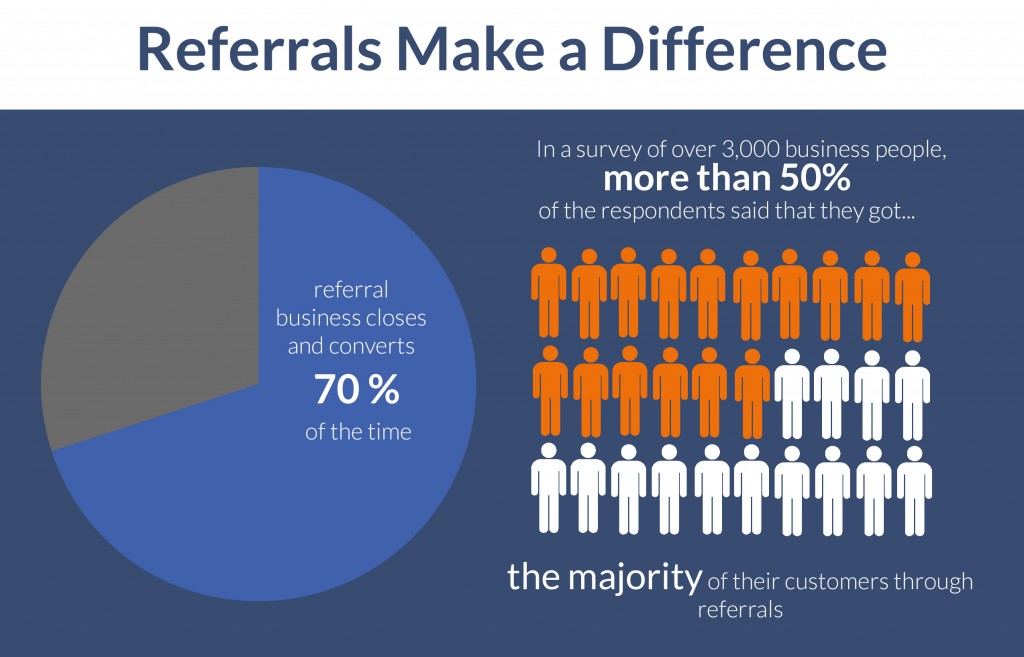
It’s Not Just About Numbers
For all the leads referrals help you generate and the sales they help you close, there are a few hidden benefits to referrals as well.
For one, referrals make your customers more loyal.
How?
Because when a customer refers an opportunity to your business, she is essentially saying “I’m putting my reputation on the line by referring my friends to you – and I trust you not to mess this up”.
“…[Customers that refer opportunities to your business] are far more likely to stick around, since they have their personal reputation at stake”
It also means that they are far more likely to stick around, since they have their personal reputation at stake. In my experience, it isn’t uncommon for customers to even call me to specifically ensure that we’re doing a good job for their referrals.
Second, a lack of referrals can give you valuable insight into your own business.
If a customer is unwilling to give you a referral, it could indicate that:
- They don’t intend to stick around long enough to prolong your existing relationship by pulling in their friends in as well (problem: poor customer service, product or lead quality).
- They don’t have a quick and easy way to direct referrals to your business (problem: poor referral system).
- That your product/service doesn’t wow them enough to refer their friends to it (problem: product quality).
In either situation, your customers’ unwillingness to provide referrals will tell you where you’re going wrong and what you can do to make your business better.
Three Methods to Increase Sales Referrals
This brings me to the next obvious question: how do you actually increase referrals?
As much as I’d like to say, “do X, sit back and watch the referrals roll in”, I can’t. Implementing a successful and sustainable referral program is hard work with trial and error.
Having said that, there are plenty of methods you can implement right away to increase your referrals.
Here are three of my favorites:
1. Reduce referral friction: By ‘referral friction’, I mean the amount of effort it takes for an existing customer to pass on referrals to you. Do customers have to hunt for a referral link, or is it readily accessible (say, in your email signature or in your site footer)? Does the referral program (if any) have a lengthy sign-up process? Do you have a specific page on your site for capturing leads from qualified referrals?
2. Offer referral incentives: This one is a bit tricky. You ideally want customers to refer to you because you make amazing products, not because you pony up cash for each referral. Yet, offering incentives in cash can dramatically increase the amount of referrals you get.
Tread lightly here, as it is very easy to lose your way and land a bunch of customers who come there just to reap the referral rewards.
One alternative is to offer incentives in the form of services or gifts instead of cash. This can potentially improve the quality of leads coming in through the referral system without costing you a whole lot of cash up front. Dropbox has a great implementation of this where you get extra space for every friend who signs up through your link.
3. Ask: Yes, I know it sounds crazy, but you’ll be surprised to know how many people will be happy to refer others to your business if you just go ahead and ask.
In fact, as per sales legend Dale Carnegie, 91% of customers say they’d happily give referrals, but only 11% salespeople actually ask for them.
So do this: dig through your order history to find the most loyal customers and shoot them a polite, honest email. Tell them that you’re trying to grow your business, and any referrals you can get will be appreciated. Reassure them that you’ll do your level best to keep these new referrals happy. Throw in an incentive or two if you must.
Adopt this three pronged approach and you just might be able to build yourself a scalable referral channel.
Key Takeaways
Based on the above, we can conclude that referrals are very important for B2B sales . We can also conclude that:
- Customers who refer others tend to be more loyal and generate more value in the long-term.
- A lack of referrals can reveal valuable insights about your product.
- To grow referrals, reduce ‘referral friction’, offer incentives, and implement a referral program.
- Often, asking directly for referrals is worth it.
- Above all, build a product customers will love referring to.
by Mansour Salame | Sep 10, 2014 | Inside Sales, Sales Management, Sales Process, Startup Growth
Contactual was my second Startup. I had recently sold my previous company, NextAge, and started Contactual. But unlike NextAge, which relied on a field sales model, Contactual was based primarily on an inside sales distribution model. We had validated our Customer Value Proposition and like most tech startups looking to grow their inside sales team, we were looking to implement Salesforce.com to support our Sales Process. Salesforce.com came with a predefined 14 stages Sales Process that looked something like this: Leads have four types of status:
- Open
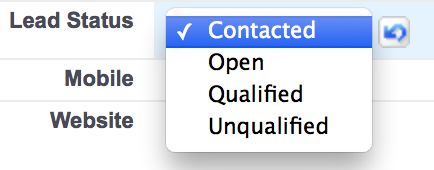
- Contacted
- Qualified
- Unqualified
Figure 1. Pre-Configured Lead Statuses in Salesforce
Opportunities have 10 stages:
- Prospecting
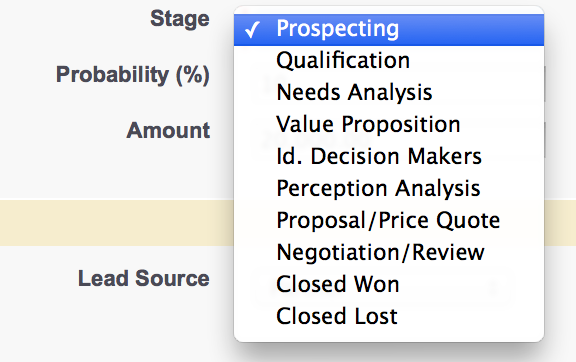
- Qualification
- Needs Analysis
- Value Proposition
- Identification Decision Makers
- Perception Analysis
- Proposal/Price Quote
- Negotiation/Review
- Closed – Won
- Closed – Lost
Figure 2. Pre-configured Opportunity Stages In Salesforce
The problem I had with the Salesforce.com predefined Sales Process was that I not only didn’t know what some of the stages meant, such as Perception Analysis, but I didn’t think the system worked for most B2B startups with an inside sales team. I don’t think Salesforce.com intends for any of its customers to implement their predefined Sales Process (it is just there as a preconfigured example). The sad thing is that most startups keep the predefined Sales Process the exact same way it came from Salesforce.com and never bother to modify it to reflect the specificities of their market, customers, company and product. I believe that every company that wants to build a successful B2B inside sales team has to build its very own Sales Process. The internet has changed the balance of power between the seller and the buyer. It used to be that buyers would rely on vendors to provide them with most of the information they would use to make a purchasing decision. Now with the internet the buyer has access to a lot of information before even contacting the vendor. Therefore the buyer determines the Sales Process by choosing the steps of his purchasing process, the Buyer’s Journey. Your sales process has to match your target market’s Buyer’s Journey. This forces you to analyze your target market and understand the way your prospects want to do business. Your sales cycle should make their journey easier and nudge them through the process. At Contactual, we started with an inside sales process that consisted of seven steps. Our initial sales process looked something like this:
- Inquiry
- Qualified Lead
- Prospect/Opportunity Development
- Quote Proposal/Negotiations
- Selected
- Closed – Won
- Closed – Lost
As we understood the behavior of our prospects better, we realized that some of the defined steps we were using were not objective and linked to key activity in the Buyer’s Journey (see Figure 3). In inside sales, it is important to define a clear sales process that promotes activity to move the prospects to the next stage in their Buyer’s Journey with no subjective steps. It has to be clear if an activity happens which stage your are in. It should not be a subjective decision to determine where a given deal is in the process.
“this not only increased the accuracy of our process and success rate but also sped up the Sales process as the rep was always focused on the next activity [in the inside sales process]”
We also realized that certain prospects would pause their Buyer’s Journey process, but might be interested in continuing the Journey later on. For them we added a new stage we called Nurture, which was where we would keep educating them with drip marketing, notifying them of new white papers, relevant webinars and touching them about once a month so that we would still stay on their minds.
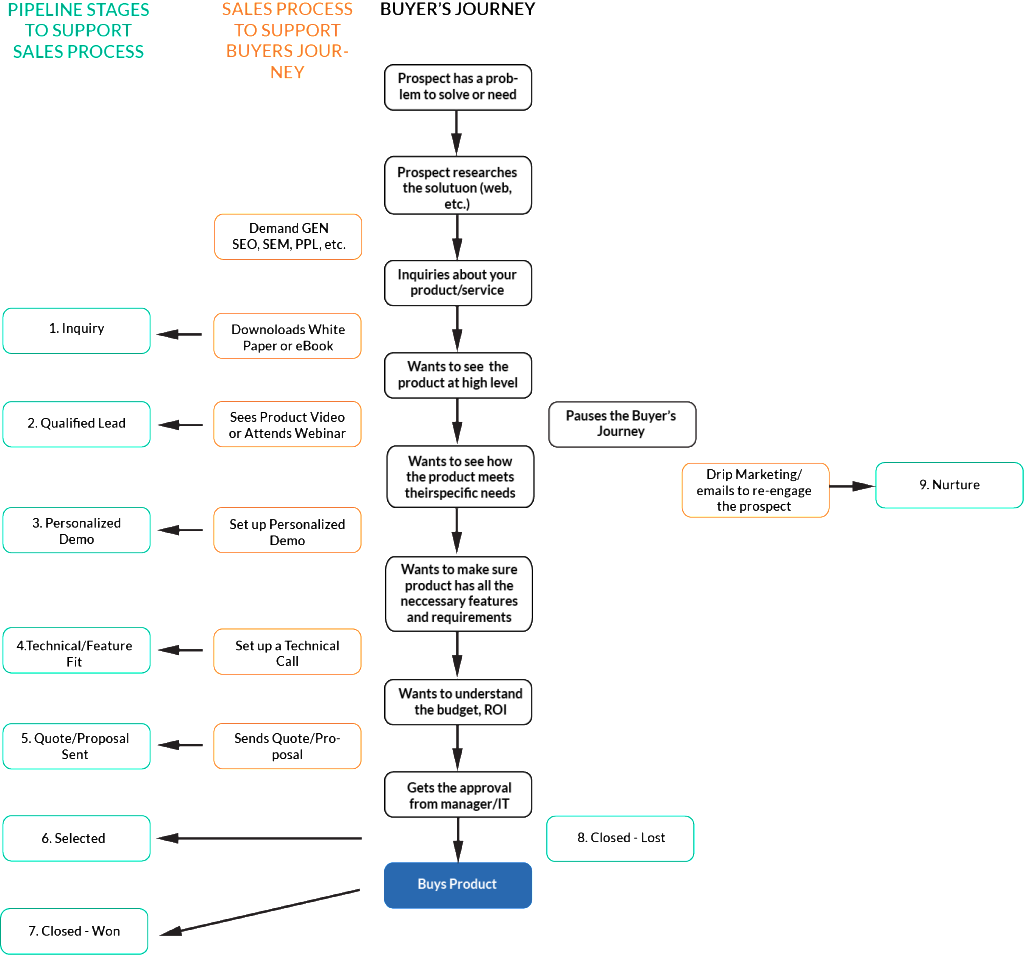
Figure 3. Mapping of the Sales Process to the Buyer’s Journey. Please click on the image to enlarge.
Our modified system was now:
- Inquiry
- Qualified Lead
- Personalized Demo
- Technical/Feature Fit
- Quote/Proposal Sent
- Selected
- Closed – Won
- Closed – Lost
- Nurture
As we understood better our Buyer’s Journey, we replaced Prospect/Opportunity with two steps specific to our Sales Process (Personalized Demo, Technical/Feature Fit). This made it clear that if our prospect participated in a personalized demo, they were in our third step and if they confirmed that our product met their feature requirements, they were now in the fourth step. We felt this not only increased the accuracy of our process and success rate, but also sped up the Sales Process as the rep was always focused on the next activity (i.e. get Technical/Feature Fit), send a quote, etc.. We finally had a predictable, scalable process that enabled us to hire more representatives on the team, train them, and have predictable bookings along with revenue growth. Again the above Sales Process was specific to one company. Each company should regularly spend time to understand its current prospects Buyer’s Journey and define and improve its own Inside Sales Process making each step objective, activity and event based in a way to have the sales reps always focused on the next step in the process that helps the buyer go through their journey faster and more easily.
by Mansour Salame | Aug 20, 2014 | Sales Management, Sales Process, Startup Growth
Here’s a scenario: you build a kick-ass product, sign up a few betas from your relationships, get Crunched, raise funding and promptly hire a VP of Marketing, a VP of Sales and a half a dozen sales people to scale your revenue.Your sales reps immediately get to work, dialing numbers and sending emails with the kind of gusto that would make Alec Baldwin’s character from Glengarry Glenn Ross seem like a two-bit huckster. Yet, despite the initial momentum (with the friendly Betas, that typically did not understand what they were buying), your sales flatline and your startup hits a brick wall. The sales people start blaming marketing (“We don’t have the right leads, or enough leads”), who start blaming the product guys (“The product is not addressing the market needs, it needs feature A and feature B”), and before you know it, you have an all-out war of attrition that leaves your investors antsy and your once-fledgling startup staring at the dark pits of the deadpool having spent most of your first round of funding.
As unlikely as this scenario may sound, in all my years of working in and with startups, I’ve found it to be all too common. Turns out, most startups do not have a validated Customer Value Proposition, that is one of the key reasons startup failure rates are so high.
What to Do When You Don’t Have a Validated Customer Value Proposition: Search for one!
One vital ingredient in a startup’s success is finding and validating a Customer Value Proposition that your target market is willing to pay for and that your product can deliver on.
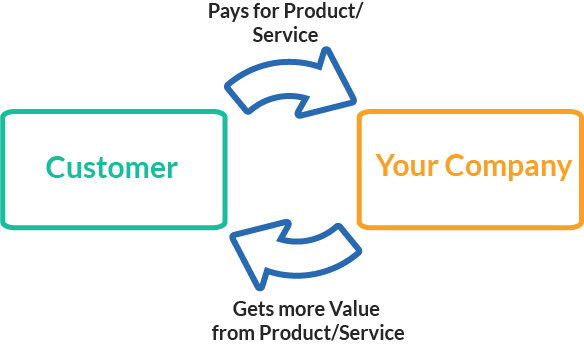
Figure 1. Validated Customer Value Proposition
Having a validated Customer Value Proposition is key to scaling your Startup’s revenues. Without it you cannot have a salable Customer Acquisition Model (reliable Demand Generation and repeatable Sales Process). This is exactly why bigger businesses are able to close thousands of sales each month: they have a Demand Generation and Sales Process that works. But it is important to note that a Startup is not a small version of a Bigger Company. A Bigger Company is optimized to ‘scale’ whereas a Startup is optimized to ‘search’. Don’t scale until you ‘searched’ and validated your Customer Acquisition Model.
“…a Startup is not a small version of a Bigger Company. A Bigger Company is optimized to ‘scale’ whereas a Startup is optimized to ‘search’

The first step, therefore, is admitting that you are in ‘search’ mode. The next step is to keep only a small team to do the search. Typically the founder, a sales rep and a marketing person are enough. Step three is to scrap all your existing sales and marketing material and meet with prospective customers.
Don’t just hypothesize; test your Customer Value Proposition to find out what your customers really want and are willing to pay for.
Here’s what a ‘search’ exercise might look like:
- The founder talks to dozens of customers to find out what they need and will pay for.
- Founder translates those new found needs into product features
- The tech team builds the missing features into the product.
- The remaining marketing person tests out new funnels and channels, emphasizing newly articulated value proposition to generate new leads
- The remaining sales rep works with the new leads, calibrates success rate against previous leads.
- Repeat, until you have a value proposition that allows you to sell customers (that are not your personal relationships)
You will have a validated Customer Value Proposition when you have closed sales with at least three customers that you did not know previously. Once you have validated your Customer Value Proposition, the next step is to ‘search’ for your Customer Acquisition Model, which includes reliable Demand Generation and a repeatable Sales Process (where the founder is no longer involved in every sale).






